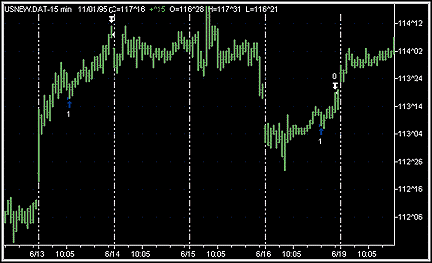The rule-based approach may also be a "mind-based" one, relying on the individual constructing the system. Once observations have been made, these ideas must be formalized into computer programming instructions.

The Nature of the System
"In examining charts, I have observed that some markets such as the Standard & Poor's 500 index and bonds frequently move in thrusts and retracements, even in an intraday time frame. If the overall market direction is bullish, often the market will open, inch down to form a low, make a larger thrust upward to form a high, pull back to a retracement level, and then make another upward thrust. In a bearish market, of course, the pattern is reversed, with the thrusts down and the retracements up."

"My first step in developing this system was to write a set of rules that would express my concept of the thrust-retracement pattern. My main concern was to make sure there would be a reasonable match between the rule-generated identifications of the thrust retracement pattern and those generated subjectively."